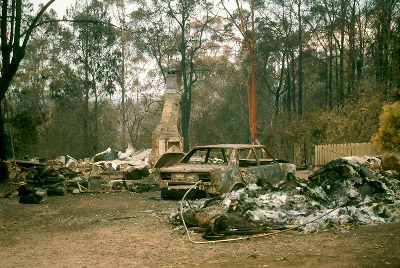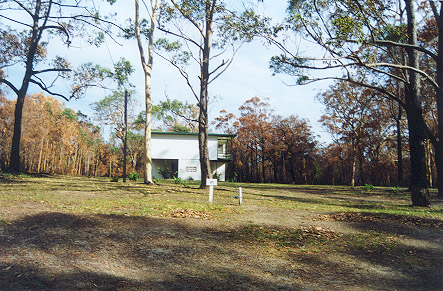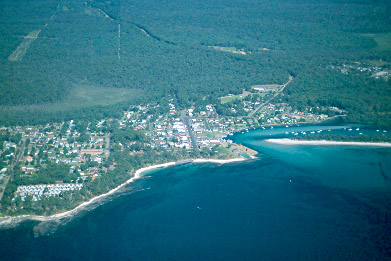

Newsletter
A View From The Edge
Issues in Rural and Metropolitan Fringe Planning
Ian Sinclair,
Principal Consultant, Edge Land Planning
Rural and Environmental Planning Consultants
As published in New Planner, The Magazine of the Planning Profession in NSW
Number 50, March 2002
Bushfire Risk
The ever-present risk of bushfires has been brought back into the community's consciousness by the recent fires.
One thing the firefighters were reported as noting was the amount of people who were not prepared for the possibility of a bushfire. It is evident that the community has become complacent about bushfires occurring. I think that we as the planners have also become complacent. The destruction of bushland and some houses has shown that there is no room for complacency with bushfire risk. This non-preparedness related to the clearing of the land around the houses and the house construction.
An inspection of Wollondilly and Shoalhaven (where the most houses were destroyed) has revealed that, generally speaking, those houses that had a sufficient cleared area around them (asset protection zones) were saved and those that did not were burnt. This can be seen from the photos below.


One other issue that needs to be considered is asset protection zones around entire villages. There are a number of villages that are surrounded by National Parks with the dense bushland extending to within a few metres of the houses. This is the case with Huskisson, which was one of the areas that lost houses in the recent fires. The photo below was taken before the fires but it shows the close proximity of the bush to the village. This is now all burnt and the houses that were burnt were on the edge of the village. There should be an exclusion zone of 50 to 100 metres around the edges of such villages, which could be used for active recreation areas or open land.

The NSW Rural Fire Service and Planning NSW have recently released an updated set of guidelines called Planning for Bushfire Protection. These guidelines are useful and should be used to develop planning policies. They are relevant for both development control and strategic planning.
A policy is only as good as its implementation. There is a need therefore to ensure that houses built in accordance with a policy maintain the asset protection zone. This is easier said than done and could be achieved by regular education campaigns.
There is also a need to carry out some investigations into the areas that have been burnt to look at the houses that were lost and those that were not. This needs to be done in a detailed systematic manner to find out if the current policies are working or if there is a need to revise them. Perhaps there is a need to revisit the current planning policies in the light of the outcomes of these investigations. Of particular concern is the size of the asset protection zone. Observations in Shoalhaven and Wollondilly lead me to question the adequacy of the current size, which I believe to be too small.
Bushfires are a fact of life in Australia and we must remember that they can cause a great deal of destruction to both the natural and built environment. We need to have regard to this when considering new development in bushfire prone areas and not become complacent. ESD and the precautionary principle apply here and we need to remind people what can happen to quiet and peaceful bushland when it is burnt.
Top of page...
launched March, 1999
copyright © 1999 - 2013 Edge Land Planning
All rights reserved.